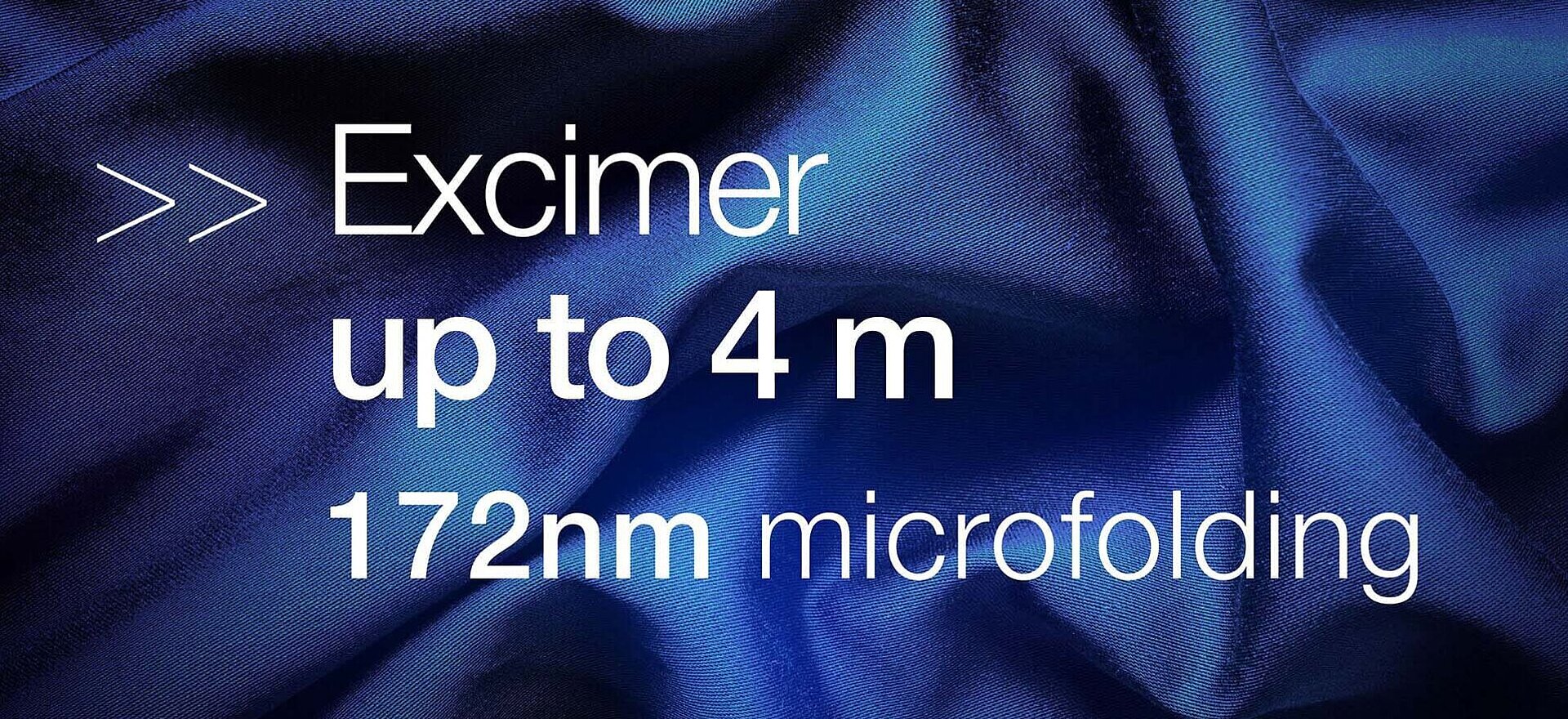
Excimer
Matting, cleaning, surface activation or modificaiton
Excimer technology is used in many industrial sectors and applications. Excimer stands for “excited dimer”, in other words a dimer (e.g. Xe-Xe-, Kr-Cl gas) which is excited to a higher energy state following application of an alternating voltage. This process physically separates at least one of the electrodes from the dimer gas by means of a dielectric barrier layer (synthetic quartz glass). The synthetic quartz glass allows transmission of UV light, even at wavelengths below 200 nm. To get around the problem of absorption by the oxygen in air, the process is run in an inert atmosphere which uses nitrogen.
Our in-line excimer systems enable matting of up to 4 metres in width with an output of 5 W/cm, even for larger widths. The system guarantees streak-free matting without visible differences and ensures a uniform finish. It is characterised by low nitrogen consumption and homogeneous nitrogen distribution. Our excimer lamp offers 5 W/cm even with lamp lengths over 2,000 mm. The protected outer electrode enables safe cleaning, and the stainless steel electrode prevents greying on the inside, which increases the service life by a factor of 2. In addition, permanent ozone cleaning ensures high performance.
In the flooring industry, this creates new possibilities for efficient and even surface finishing and sets new standards in the processing of large-area floor coverings.
Irradiating surface coatings with short-wave excimer beams polymerizes the top layer, forming a thin, cured film on the surface. As polymerization also results in shrinkage, the film close to the surface exhibits microfolds which create a matt surface. As a consequence, the formulation need not include matifying agents. The coating is then deep-cured downstream by conventional medium-pressure UV lamps
UV cleaning methods play a key role in the display and semiconductor sector. Very short wavelength UV light (peak value 172 nm) is used to break up the bonds in organic substances. Additional generation of ozone oxidizes these contaminants into carbon dioxide and water. The result is a clean surface.
The modification of surfaces improves surface tension, which in turn improves wettability. Wettability is measured via contact angle. A significant effect is achieved at wavelengths of below 200 nm.
Spheres of application: display panel production, touch panel production, wafer production
Ozone forms at wavelengths below 242 nm. By then, the energy value of the light equivalent has reached a value capable of splitting the oxygen molecule (O2) into oxygen atoms (O). If the oxygen atoms react with an oxygen molecule, ozone (O3) forms. Its wavelength of 172 nm and associated high-energy radiation makes an excimer a good “ozone generator”.
Damage to DNA occurs at wavelengths of up to 280 nm. This prevents bacteria and viruses from multiplying. There is a high degree of effectiveness in the range of 254 nm, but ozone absorbs the corresponding wavelengths from medium-pressure Hg lamps. Spheres of application: bleaches in the textile and foamed material industries, disinfecting water and air.